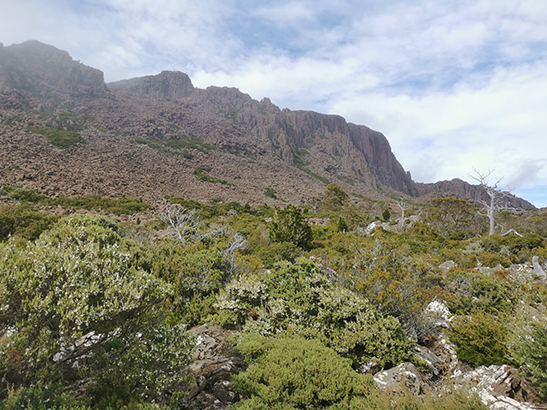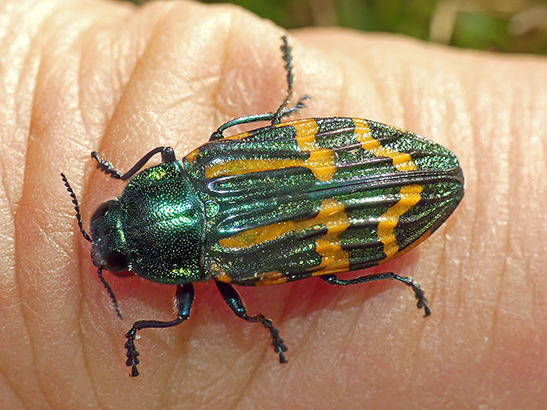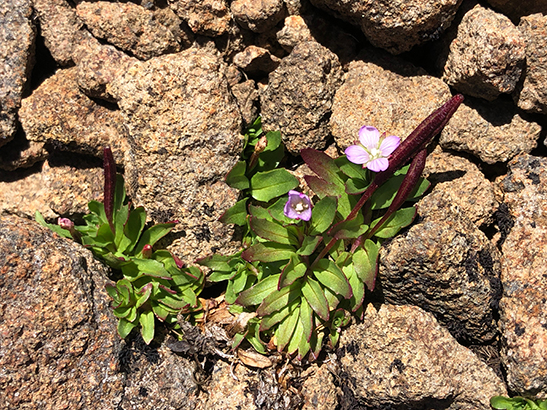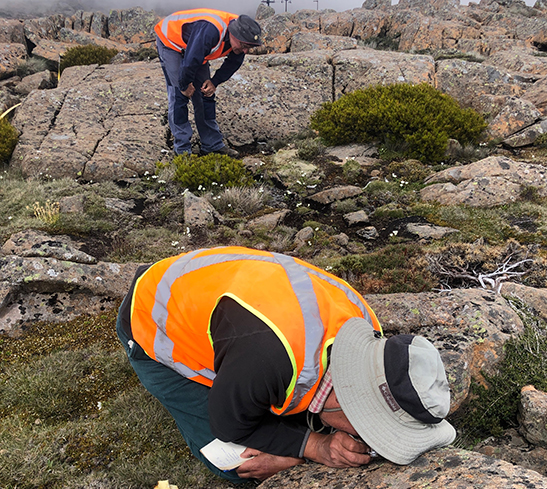TMAG’s Expedition of Discovery 2022 a great success

Tasmanian Museum and Art Gallery’s (TMAG) scientists recently completed fieldwork for this year’s Expedition of Discovery, and are looking forward to sharing many interesting findings in the months ahead.
Since 2017, TMAG’s botanists and zoologists have undertaken annual expeditions to explore some of the more remote or under-studied areas of Tasmania, with the aim of documenting their flora and fauna.
The findings from the team’s previous expeditions, held at the Musselroe Wind Farm in north-east Tasmania in 2018 and at Spring Bay Mill near Triabunna in 2019, were recently published by the Royal Society of Tasmania. These expeditions proved to be significant, with well over a thousand species of plants and animals recorded from each of the areas. Many threatened species were recorded, and several species – mostly lichens and invertebrates – are new to science or new records for Tasmania.
The latest expedition, which was generously funded by Detached, took place on the Ben Lomond plateau over a week in February. With much of the area located at around 1 500 metres above sea-level, the plateau is the most extensive area of continuous alpine environment in Tasmania, supporting alpine grassland and shrubland, and seemingly bare rocky areas covered almost entirely in lichens and mosses.
As well as undertaking a general survey of plants and animals, four plots were set up that could be revisited in the future, providing baseline information on what is living at this high altitude in 2022. With a warming environment a predicted outcome of climate change, and the increased potential for bush fire or drought, these records and observations will enable future surveys and expeditions to gauge how the environment has been affected.

For Dr Simon Grove, Senior Curator, Invertebrate Zoology at TMAG, just one of the many entomological highlights was finding two Tasmanian endemic jewel-beetles: Castiarina rudis, which is known primarily from the Central Plateau but also from Ben Lomond; and a rarer species, Castiarina macquillani, or Macquillan’s jewel-beetle (pictured above), which is previously only known from specimens collected by Peter Macquillan back in 1987, in mountains near the West Coast.
“The [Castiarina macquillani] specimen in the photo was one I caught in my hands as I spotted it flying towards me while we had stopped for a mid-morning snack,” Simon said. “And the Castiarina rudis was collected by another team member after it alighted on the fluoro vest of one of our botanists.”
“Serendipity still plays a big part in scientific discovery.”

Over 100 species of vascular plants were collected from the plateau during the expedition. Of these, one group of particular interest to the botanists included the willowherbs (Epilobium species), of which one species collected is a new record for the area.
Lichens have proved to be exceptionally diverse. Amongst the several hundred species already identified, there promises to be several that are new to science, and others that have never been recorded for Tasmania before.

The team have already started to work on the specimens and will do for months to come, but they are certain there will be many more exciting findings to share in the future.
TMAG’s 2022 Expedition of Discovery was generously supported by Detached Cultural Organisation.
Image captions:
1. Ben Lomond. Image credit: Dr Simon Grove
2. Macquillan’s jewel-beetle. Image credit: Dr Simon Grove
3. Epilobium willisii is one of five species of Willowherb collected from the Ben Lomond plateau. Image credit: Matthew Baker
4. TMAG botanists, Gintaras Kantvilas (foreground) and Miguel de Salas, recording lichens and vascular plants from Legges Tor, Ben Lomond. Image credit: Matthew Baker

